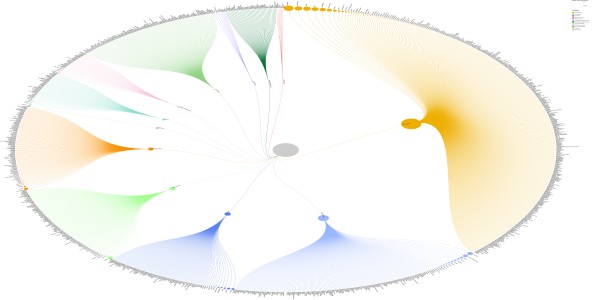The not-so hidden pollution of online advertising
It’s big, and (also) inside every browser.

Browser cookies are, as I explained here, “small text files… that websites give to your browser so they can recognize - and profile you - the next time you visit them”.
Carbolytics is a fascinating, and quite relevant research project, whose purpose is just to “identifies and analyses the carbon emissions of the total number of cookies belonging to the top one million websites."
The project just reported their first findings. They identified and examined more than 21 million cookies per single visit to all those websites, belonging to more than 1200 different companies, and concluded that:
- The cookies in the chart above (see the website for the real, big one) are sent around over 198 trillion times per month
- Their exchange produces (at least) 11,442 monthly metric tonnes of CO2 emissions
- The first thousand cookies (the top 0.018%), by the number of sites they are installed on, cause a stunning 50% of all the emissions, and the top 1% of cookies (a little over 53 thousand) corresponds to 82% of emissions
Many cookies have perfectly legitimate, privacy-respecting uses, and many very useful online services would not work without them. Still, remember those figures, the next time anybody tries to sell you the myth that “cyberspace” or online advertising are “immaterial”. And do read the report for more disturbingly fascinating details.
Who writes this, why, and how to help
I am Marco Fioretti, tech writer and aspiring polymath doing human-digital research and popularization.
I do it because YOUR civil rights and the quality of YOUR life depend every year more on how software is used AROUND you.
To this end, I have already shared more than a million words on this blog, without any paywall or user tracking, and am sharing the next million through a newsletter, also without any paywall.
The more direct support I get, the more I can continue to inform for free parents, teachers, decision makers, and everybody else who should know more stuff like this. You can support me with paid subscriptions to my newsletter, donations via PayPal (mfioretti@nexaima.net) or LiberaPay, or in any of the other ways listed here.THANKS for your support!